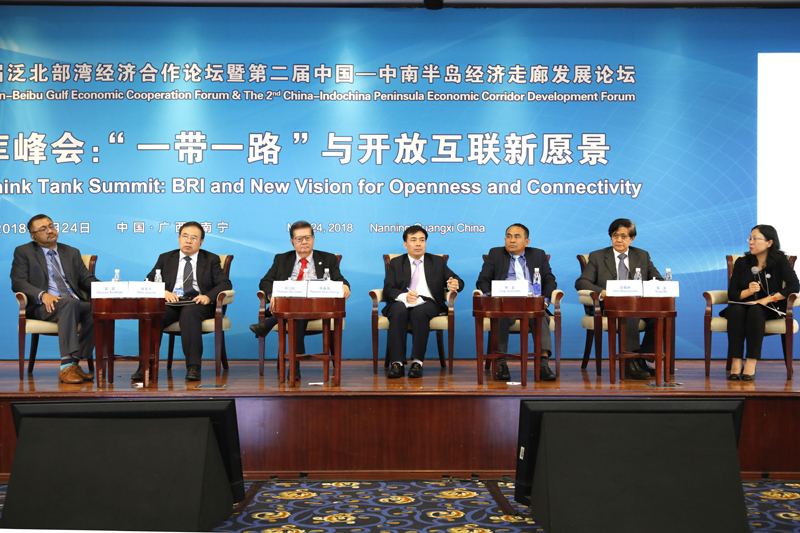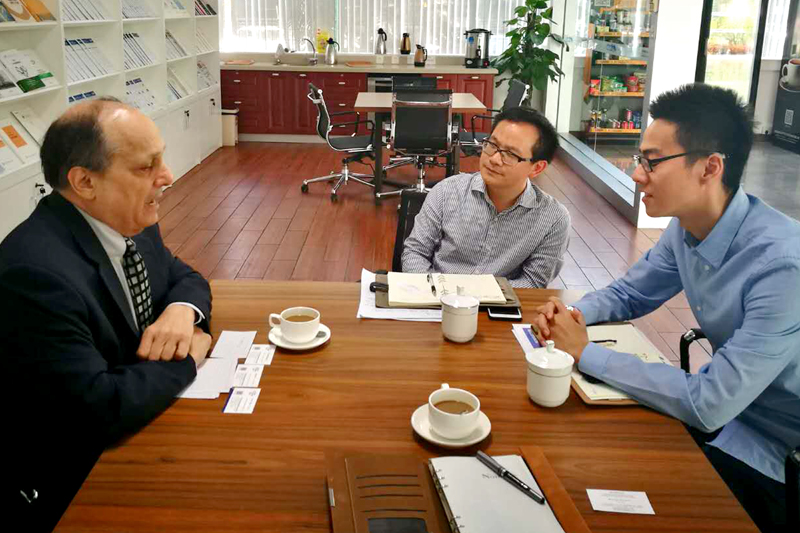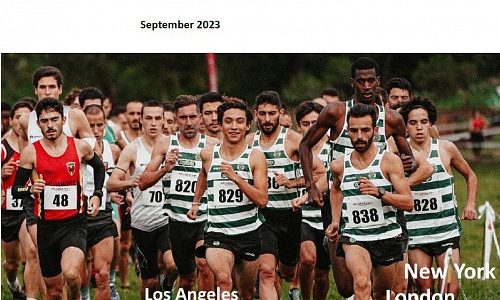Independent innovation and consumption updating are two key points for China’s long-term economic growth
 Author: Fan Gang, President of CDI
Author: Fan Gang, President of CDI
Editor’s note: In terms of the recent Sino-US trade friction, Prof. Fan Gang thinks that it can be solved, only not with a single agreement, but step by step with multiple negotiations. In the long run, China should strengthen incentive mechanism for technology innovation to better foster independent innovation.
- On the current economic situation
Over the past 40 years, China’s economy has seen fluctuating high growth, while still in the process of adjustment. There are two views about the current economic situation. Optimists think that a new cycle is coming, while pessimists think that deleveraging and regulation will lead to tight liquidity. I’m not that optimistic, I don’t think that China’s economy is entering a new cycle now, and a lot of problems remain unresolved, including deleveraging and de-capacity. The resent reduction in reserve ratio released liquidity and restored it to its proper level, which is a neutral policy, and should not be interpreted as expansionary or tightening policy. In this sense, I am also not that pessimistic.
- On China’s long-term economic development and Sino-U.S. trade friction
United States trade deficit cannot be solved due to two reasons. First, U.S. savings rate is low. Second, as an international currency, other countries need to purchase goods from the U.S. in exchange for dollars, at the same time do not sell goods to U.S. or spend U.S. dollars, thus creating trade deficit. Among these countries, U.S. has the most extensive deficit problem with China due to the huge trade imbalance. In the trade of productions, China’s strengths are low and middle end manufactured goods, while Unite States are more advanced in high-tech and arms trade. As economy is booming in China, there are more products to be sold. Meanwhile, export control is tightening in United States, giving China less purchase options. As a result, trade imbalance increases. The United States penalized ZTE, at the same time restricted the export of high-tech products, exacerbating trade deficit. Although the two countries are hoping to reach on an agreement, it is always possible that U.S. will exit the agreement as they have done so multiple times recently. Therefore, Sino-U.S. trade fiction cannot be settled through single negotiation or agreement, but in multiple steps and stages.
On the other hand, it is apparent that U.S. is focusing on restricting China’s technology advancement. However, China’s technology and economic development is definite, therefore making the problem irreconcilable. China’s first stage of economic growth depended on cheap labor, i.e. comparative advantage. The second stage of growth depended on relative advantage or late-mover advantage, in other words learning from knowledge and technology spillover of other countries. Establishment of joint ventures is a perfect example. Unites States has noticed this trend and may disconnect the learning process. In the future, our researchers may be restricted from visiting the United States.
China’s economic development is entering a new stage of independent research and development, with multiple measures in effect simultaneously, such as introducing foreign capital, sending students overseas, conducting online learning and exchanges. In other words, giving play to comparative and late-mover advantages at the same time. Meanwhile, the influence of independent innovation mechanism is growing, which pushes and demands us to move on with technological innovation and reform the innovation system. The recent Sino-US trade friction has been a perfect reality check for China. The development of scientific research in United States is closely related to property rights. The implementation of Bayh–Dole Act ensures that even within national research projects, personal intellectual property rights will be protected. As a result, it serves as incentive for both researchers and operators, and also allows capitalization and globalization of intellectual property rights. We must give play to both national function, in terms of basic scientific research and underlying technology research, and market’s effect, in terms of incentive mechanism for intellectual property.
- 3. On the new stage of China’s consumption
In the past, low consumption rate and high savings rate were two major economic problems in China. Since 2004, savings rate has exceeded 40%, reached 52% in 2012, and decreased to 44% in 2016. With rising consumption rate, we can expect a general trend which can be attributed to multiple factors. Firstly, the overall income level continues to rise. Secondly, income level of low-income group is growing at faster pace. For example, migrant workers’ income growth rate has been at a steady 17-18% since 2007. Ninety percent of the extra one thousand yuan will be used in consumption, which is a huge stimulus on consumption growth. Thirdly, social security. Fourthly, consumer finance and e-commerce. Finally, consumption by retirees, known as negative savings in economics, also begins to grow as a result from the retirement of the first generation that became rich after reform and opening-up.
We are now facing two turning points. First, high-tech investment has become critical after entering the stage of independent innovation. Second, the ones that are considered as emerging industries in China are developing rapidly, such as growth in general consumer goods, leisure, fitness, health care, medical treatment, vacationing, spiritual and cultural consumption. The return on both aspects are considerable, making them ideal and important areas for investment. In this sense, China will not lack investment opportunities.
Prevention and control of financial risk from national and macroeconomic perspective
 Author: Fan Gang, President of CDI
Author: Fan Gang, President of CDI
Editor’s Note: Prof. Fan Gang gave a speech at the first Summit Forum on Financial Risk Prevention which was held in Shanghai. During which, he analyzed the significance and influence of prevention and control of financial risk from macroscopic perspective
Financial risk and debt risk are very serious problems, which should be approached carefully without unnecessary exaggeration since they are still controllable and do not entail immediate financial crisis.
First, the risk in lack of government regulation. Certain basic problems that should have been controlled through financial market regulation are only regulated after lengthy delay, and until being proposed on the Central Committee meeting. As a result, market risk escalates. Such situation should be prevented and resolved.
Second, financial risk in the government. After implementing the stimulus policy in 2009, local financing platform’s annual total amount of financing rose from RMB one trillion to seven trillion. With the steep increase, we need to tighten control on this type of government financing risks.
Third, risk in state-owned enterprises. The debt ratio of state-owned enterprises is relatively high, reaching 68%. In addition, there are many “dead” enterprises, which are difficult to handle.
Fourth, risk in private enterprises. One contributor to the overheated economy seen in recent years is the massive amount of companies. Underneath them, is corporate debt. It is necessary to merge and reorganize these companies seen in various industries, so as to reduce industrial concentration, reduce the total number, in order to expand the scale and improve efficiency of the industry, and essentially letting the industries better develop. Nonetheless, if no action is taken, it may lead to earlier onset of financial crisis.
We need to treat these financial risks seriously, in each node and all industries, in order to improve the quality and efficiency of our economy as a whole.
Pan-Beibu Gulf Think Tank Summit
Information

Date: May 24, 2018
Venue: International Conference Center, Liyuan Resort, Nanning, China
Host: The People’s Government of Guagnxi Zhuang Autonomous Region and CDI
Theme: Belt and Road Initiative and New Vision for Openness and Connectivity
Trade War Truce Resolves Growth Uncertainties
 Growth data was mixed in April. The value added for industrial firms was up 7% y/y, up 0.2 pps from Q1 and up 0.8 pps from Q4 2017. Fixed asset investment was up 6.1% y/y, down 1.4 pps from Q1, although still higher than in Q3 2017. Specifically, private investment was up 7.5% y/y, down 1.4 pps from Q1, and state investment was up 5.4% y/y, down 1.7 pps from Q1.
Growth data was mixed in April. The value added for industrial firms was up 7% y/y, up 0.2 pps from Q1 and up 0.8 pps from Q4 2017. Fixed asset investment was up 6.1% y/y, down 1.4 pps from Q1, although still higher than in Q3 2017. Specifically, private investment was up 7.5% y/y, down 1.4 pps from Q1, and state investment was up 5.4% y/y, down 1.7 pps from Q1.
Retail sales of social consumption goods climbed 9.4% y/y in April in nominal terms, down 0.4 pps from Q1. The real growth rate rose 7.9% y/y, down 0.2 pps from Q1. In April, exports were up 12.9% y/y, 1.2 pps lower than in Q1, though still high. The seasonally adjusted import growth rate is around 17% y/y. The fact that import growth exceeded export growth will help reduce global imbalance and sustain growth.
CPI was up 1.8% y/y in April, after falling for two consecutive months. We expect CPI this year will be like the trend in 2014, growing at stable rates. The fluctuation interval is between 1% and 2.5% y/y. Producer prices continue their slower growth trend, after growing powerfully for almost two years. The ex-factory price of industrial goods was up 3.4% y/y, and down -0.2% m/m. PPI rose 3.7% y/y, and fell -0.3% m/m.
Monetary policy is still tightening. At the end of April, M1 was up 7.2% y/y, and up just slightly -- by 0.1 pps -- from March. RMB savings deposits from non-financial enterprises were up 6.1% y/y, and up 0.8 pps from March. Both indices were mainly affected by large reductions last month, rather than signaling monetary policy loosening.
After high-level trade talks in Washington, the United States and China announced on May 21st that they would put their tariff increase threats on hold. This is very much consistent with our forecast last month that the trade war would be short-lived. We expect China to import more from the United States, as in the past, mostly in agriculture, high tech and services. This will reduce uncertainties in the global economy, and may boost investor confidence, as signaled the day after the announcement, when the S&P 500 rose 0.8%. Although the agreement would reduce China’s net exports, the impact on GDP would be negligible, as the trade share of GDP is much smaller than it once was. Use of imported high tech as capital goods in industries will certainly boost Chinese firms’ productivity. We view cooperation between China and the United States as a win-win solution for both countries, and for the world.
New Economy Mode Drives Shenzhen's Dynamic Growth
 On April 2, the president of Anari, Mr. William Anawaty visited CDI to learn the development path and experience of Shenzhen's innovation. Both parties reached consensus that the new economy mode serves as a stronger driver for Shenzhen's dynamic growth since 1978. And the reform of innovative mechanism will continue to advance Shenzhen's future development.
On April 2, the president of Anari, Mr. William Anawaty visited CDI to learn the development path and experience of Shenzhen's innovation. Both parties reached consensus that the new economy mode serves as a stronger driver for Shenzhen's dynamic growth since 1978. And the reform of innovative mechanism will continue to advance Shenzhen's future development.
Prospect and Opportunities under Sino-US Trade Friction
 One May 7, 2018, CDI and AmCham jointly organized a timely event titled “Dagger Drawn: What does U.S.-China Trade Standoff Mean for You?” in Hong Kong. The panel discussion focused on the current U.S.- China trade tension and the impact on business in the region. During the discussion, the panelists talked about the prospects of the trade war and the possibility to avoid it. CDI expert and fellow panelists stated that two countries have significant difference on culture, social structure, institution as well as two different economic systems. To solve the friction, two countries need to establish an inclusively frequent communication and docking mechanism on the basis of equality and mutual benefit. Moreover, China's future economic, industry and trade development should serve to strive win-win result for both countries. CDI expert pointed out that there are still rooms for transnational companies to expand in China, even under the current moment. Companies should well study and interpret the national strategic planning for development to seek opportunities.
One May 7, 2018, CDI and AmCham jointly organized a timely event titled “Dagger Drawn: What does U.S.-China Trade Standoff Mean for You?” in Hong Kong. The panel discussion focused on the current U.S.- China trade tension and the impact on business in the region. During the discussion, the panelists talked about the prospects of the trade war and the possibility to avoid it. CDI expert and fellow panelists stated that two countries have significant difference on culture, social structure, institution as well as two different economic systems. To solve the friction, two countries need to establish an inclusively frequent communication and docking mechanism on the basis of equality and mutual benefit. Moreover, China's future economic, industry and trade development should serve to strive win-win result for both countries. CDI expert pointed out that there are still rooms for transnational companies to expand in China, even under the current moment. Companies should well study and interpret the national strategic planning for development to seek opportunities.
Synergy between BRI and 2030 Agenda for Sustainable Development: UNESCAP and CDI
 Dr. Shamshad Akhtar, Under-Secretary-General of the United Nations and Executive Secretary of the United Nations Economic and Social Commission (ESCAP), and Dr. Mia Mikic, Director of the Trade, Investment, and Innovation Division of ESCAP, visited CDI and had discussions on joint research on the Belt and Road Initiative (BRI) with CDI experts. Dr. Akhtar said that BRI, which will enhance integration in Asia-Pacific region, will facilitate the implementation of the 2030 Agenda for Sustainable Development and that BRI need to address challenges of infrastructure connectivity, trade costs, sovereignty debts, labor skills etc. UNESCAP and CDI agree to promote cooperation on research related to trade, investment, transport, and innovation to ensure policy coordination in the implementation of BRI and the 2030 Agenda for Sustainable Development.
Dr. Shamshad Akhtar, Under-Secretary-General of the United Nations and Executive Secretary of the United Nations Economic and Social Commission (ESCAP), and Dr. Mia Mikic, Director of the Trade, Investment, and Innovation Division of ESCAP, visited CDI and had discussions on joint research on the Belt and Road Initiative (BRI) with CDI experts. Dr. Akhtar said that BRI, which will enhance integration in Asia-Pacific region, will facilitate the implementation of the 2030 Agenda for Sustainable Development and that BRI need to address challenges of infrastructure connectivity, trade costs, sovereignty debts, labor skills etc. UNESCAP and CDI agree to promote cooperation on research related to trade, investment, transport, and innovation to ensure policy coordination in the implementation of BRI and the 2030 Agenda for Sustainable Development.
Fan Gang Talks about Sino-US Trade Tension, Opening Up and Chinese Macro Economy
 Any country needs to react on the trade friction or trade war. In the regard of trade deficit, President Trump is not focusing on trade related issues. He is targeting intellectual property rights, China’s high-tech industry, “Made in China 2025” development strategy which are really about growth, development and emergence of China.
Any country needs to react on the trade friction or trade war. In the regard of trade deficit, President Trump is not focusing on trade related issues. He is targeting intellectual property rights, China’s high-tech industry, “Made in China 2025” development strategy which are really about growth, development and emergence of China.
In the long-term, Sino-US trade tension definitely will cause negative impact for both America and China, as well as other countries since China is part of the supply chain.
We need to understand that the long-term interest is to enjoy long-term continuous and sustainable growth. In time people will get used to China’s growth. Now they are not used to it yet.
In terms of further opening up of China, it is a fundamental interest. We have been opening up in the past 40 years. As a result, we became stronger, and more used to international market, its risks, fluctuations, and sometimes crisis. As we are more sophisticated in dealing with these risks, we can open further. And as we grow up we need to take responsibilities for human kind and global community. Further opening up implies a lot of tasks at hand, for example, composition of new policy; then afterwards people need to adapt to the new institution. It’s not easy but it’s time.
As to Chinese macroeconomic development trend in the near future, we should know that there is risk in the economy at any given time. We are already at the bottom, part of, not a V curve, but rather a L curve. Now we are on the vertical line at the bottom, which is not long, but we still have some distance to go. In other words, we are in the process of bumping at the bottom and cannot immediately bounce back to high growth. This cycle is a normal process. Hopefully we can use this opportunity to fix our problems, e.g. overcapacity and financial risk, in order to have better growth in the next stage of economic development.
Interview with CGTN: Prof. Fan Gang Talks about Asian Integration and Competitiveness, Trade and More

Integration of Asian economy has been a phenomenon for a long time. It is not organized, but rather created by market forces and integrated into supply chain. There is division of labor. Everybody has its position, special competitiveness and comparative advantage in the supply chain. Because it is market driven, competitiveness is real.
The natural formation of this chain of values can be attributed to a lot of factors, for example, culture, stabilities, government efforts and policies. Started with East and Southeast Asia, now Central and Southern Asia, people realized that joining the global supply chain under globalization and regionalization is essential for economic development. At the beginning, Japan led the flock, then there were the Four Asian Tigers, and Tiger Cub Economies, then mainland China. This is the result of market forces and the competitiveness is real. Asia has become the most interesting, dynamic place in the world and contributed to 60% of global GDP growth. Therefore, we need to put more analytical effort in order to show the world why it happened.
US and Europe are in the upturn of economy and export to those two markets has increased in recent years. The only problem is looming trade frictions, causing worrisome which may in turn cause downturn. This shows that when you have trade friction with one country, it causes chain effect on the others. Everyone else will feel the impact because we are on the same supply chain. That’s why anti-globalization is indeed anti globalization because anti one country means anti globe.
As for the current protectionist impulse, we do need to face and deal with it. We should continue on with globalization and market supply chain even though we have trade friction with one or two countries. It is our strength that we can continue to do business with the other countries. A new term “Emerging Asia” proposes a dynamic Asia. We will not only do business with developed Asia like Japan and South Korea, but also emerging countries in Asia.
A New Round of Opening up to Spur China’s Economy
 Author: Fan Gang, President of CDI
Author: Fan Gang, President of CDI
Editor’s Note: Opening up is in line with China’s fundamental interests. A new round of reform and opening up will certainly create more opportunities for China’s development.
Opening up is in line with China’s fundamental interests. Since 1978, China has achieved rapid economic development by opening up its market and introducing foreign investment. China is now implementing the “going global” strategy, which means it will open even wider in future. It will contribute to China’s long-term interest which is to achieve mutually beneficial cooperation in the opening up.
Recent years have seen the retreat of globalization. Under such circumstances, China shall first have a clear understanding of its fundamental interests, which lie in sustaining long-term growth and closing the gap with developed countries. China shall steadily press forward with economic restructuring as it opens wider, for instance, by conducting supply-side structural reform, cutting overcapacity and excess inventory, deleveraging, and defusing financial risks. China should also maintain a prudent monetary policy to ensure steady economic growth.










